Banchan 반찬: The Hidden Gems of Korean Dining Culture
Jun 29, 2023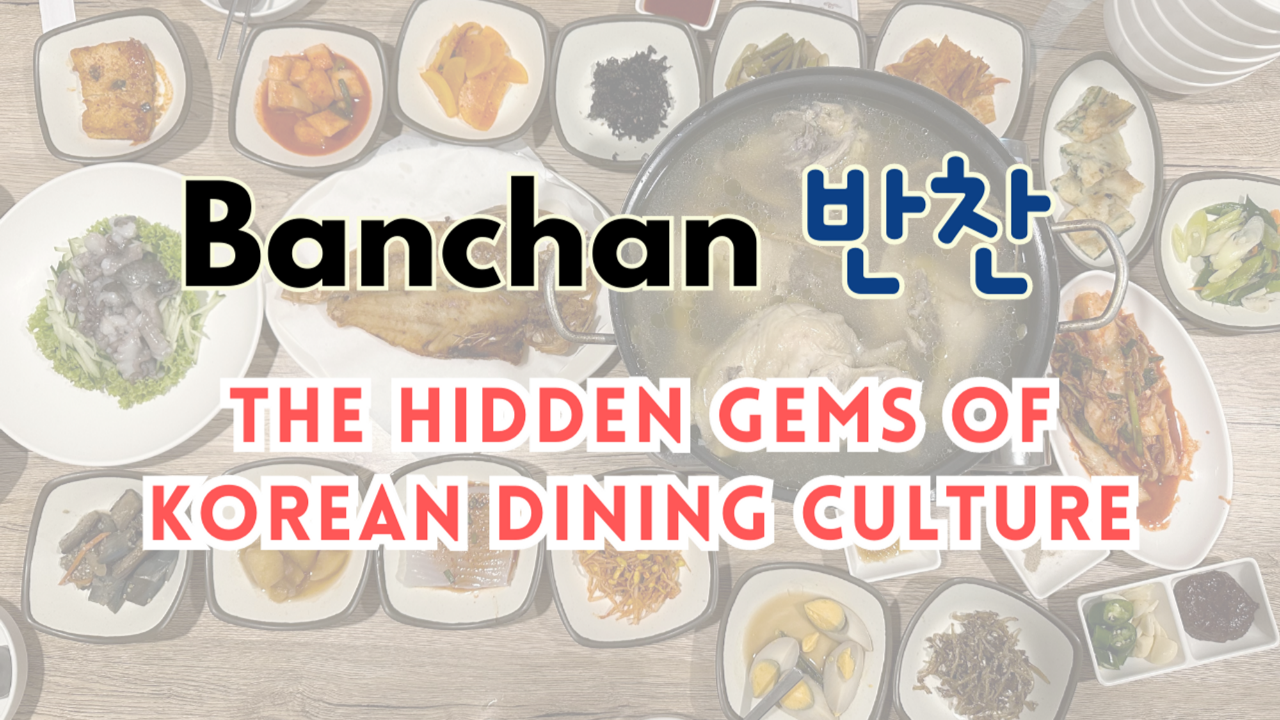
- Author: Good Job Korean team
- Editor: Good Job Korean team
👍Contents (Click to navigate instantly)
✅ Origins and Historical Development
✅ 8 Types of 반찬
✅ Significance of 반찬
Korean cuisine is well-known for its vibrant flavors, bold spices, and unique dining customs. When you dine at Korean restaurants, you may notice a fascinating array of side dishes known as 반찬 (banchan) served along with your orders. These small yet mouth-watering dishes play an important role in Korean dining culture, enhancing the overall culinary experience. Usually set at the middle of the table for sharing, 반찬 comes in small portions, and you may ask the restaurant for 반찬 refills during meals if needed. So, do not be shy to ask for more!
In this blog post, we will embark on a delightful journey to explore the history, various types, and significance of 반찬. We have also linked some highly rated recipes, in case you would like to try making 반찬 (you’re welcome 😉).
*Note: Sign up for a free Korean course here!
Origins and Historical Development
반찬 traces back to ancient Korea, where they were simple preserved side dishes, fermented vegetables, and seasoned snacks. The practice of making 반찬 evolved over the centuries, influenced by factors such as climate, regional ingredients, and cultural exchanges with neighboring countries like China and Japan.
Around the mid-Three Kingdoms era, Buddhist teachings heavily influenced the monarchies of these kingdoms to restrict meat consumption. Due to this restriction, vegetable-based dishes became more prominent in Korean cuisine, with the court kitchens developing various methods for cooking, preparing, and presenting these dishes. The commoners, too, started producing smaller, simpler versions of these vegetable-based dishes.
During the Joseon Dynasty, the Kings used food to gauge the living conditions of their people. In the olden days, the 12-banchan setting was for people with a higher ranking, such as the king or emperor, while the noble family members had a maximum of nine 반찬 served. The different 반찬 settings distinguish the power and hierarchy between royals.
8 Types of 반찬
1. 김치 (kimchi)
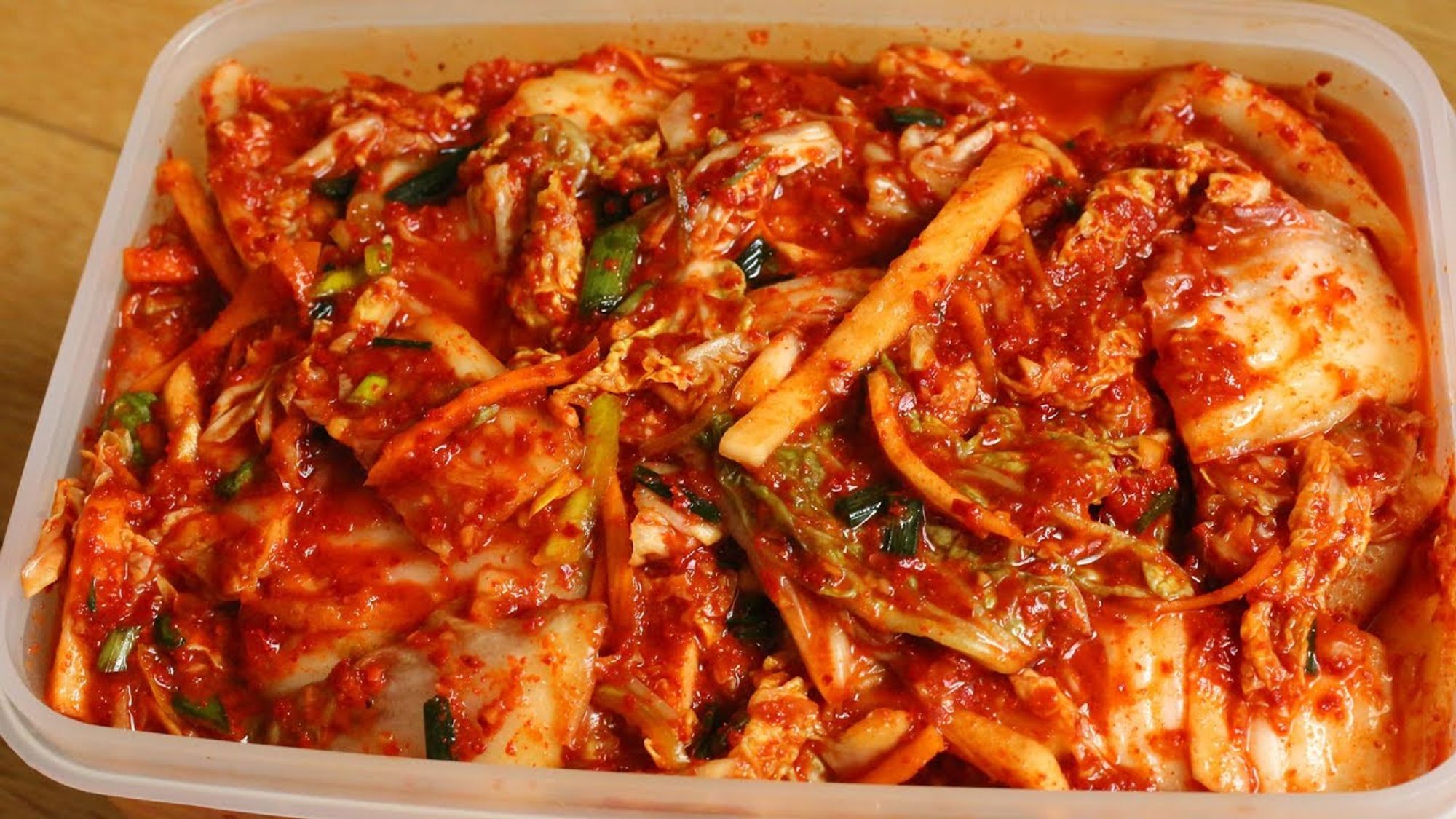 Photo credit and recipe: Maangchi
Photo credit and recipe: Maangchi
Undoubtedly the most iconic 반찬, 김치 is a staple in Korean cuisine. 김치 are fermented vegetables, such as Napa cabbage, radishes, and cucumbers. It showcases the intricate balance of flavors or textures.
During the summer months, 김치 is made fresh from seasonal vegetables. However, for a month beginning from the tenth month of the year, usually late autumn, people would start preparing large quantities of 김치. This annual event is called 김장 (kimjang), a process of preparation and preservation of 김치, where communities collectively make and share large quantities of 김치. Traditionally, this event ensured every household had enough to sustain through the long, harsh winter. As one of the most popular Korean heritage, 김장 was the 133rd Korean Intangible Cultural Property and a UNESCO Intangible Heritage in December 2013.
2. 나물 (namul)
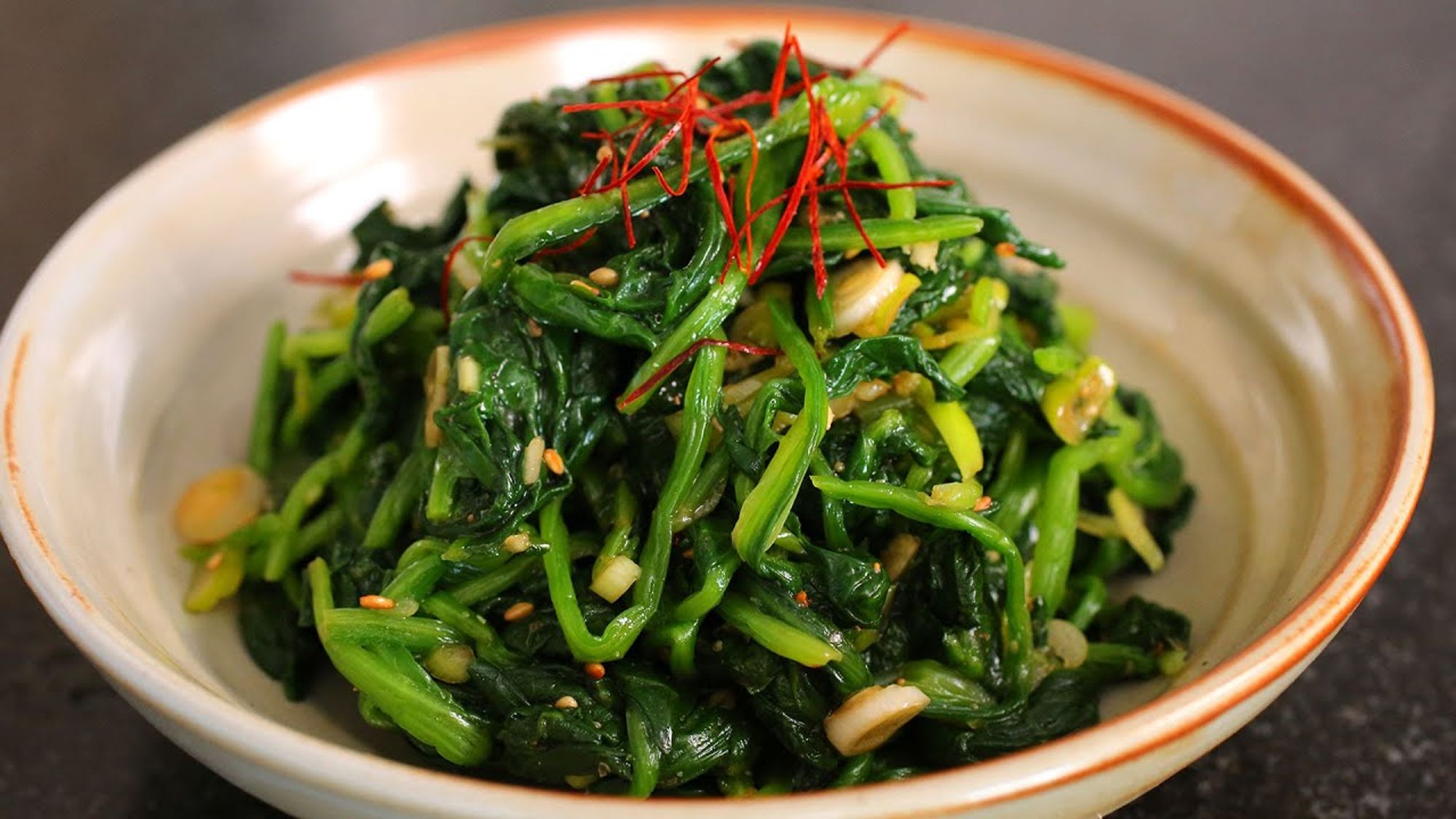 Photo credit and recipe: Maangchi
Photo credit and recipe: Maangchi
These seasoned vegetable side dishes are created by blanching or sautéing various greens such as spinach, bean sprouts, or fernbrake, often seasoned with sesame oil, garlic, salt, vinegar, chopped green onions, dried chili peppers, and soy sauce.
3. 찜 (jjim)
찜 is a category of Korean steamed dish. Although 찜 are also 반찬, these steamed dishes may not be available for free refills. The most popular 찜 is the 계란찜, a custardy steamed eggs dish cooked over direct heat, traditionally in an earthenware pot.
Eggs in Korean are called 계란, and 찜 refers to a steamed dish, hence the name 계란찜. As eggs are also called 달걀, this dish is sometimes also called 달걀찜.
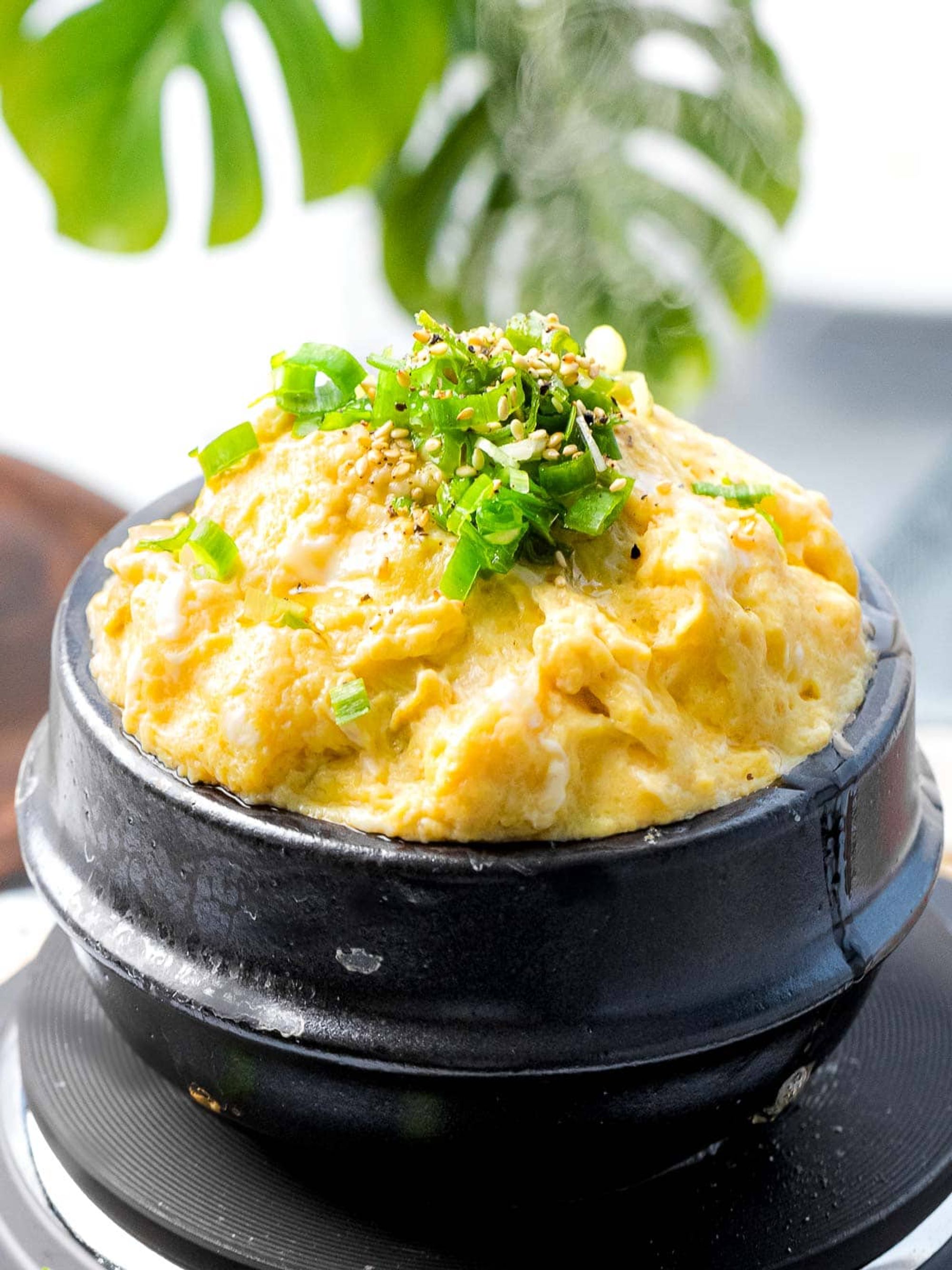 Photo credit and recipe: Drive Me Hungry
Photo credit and recipe: Drive Me Hungry
4. 볶음 (bokkeum)
The stir-fried side dishes are known as 볶음. It comes from the Korean verb 볶다 meaning to fry, roast, or stir-fry. For examples, 멸치볶음 (stir-fried dried anchovies and peanuts), 김치볶음 (stir-fried kimchi), and 마늘쫑볶음 (stir-fried garlic scapes).
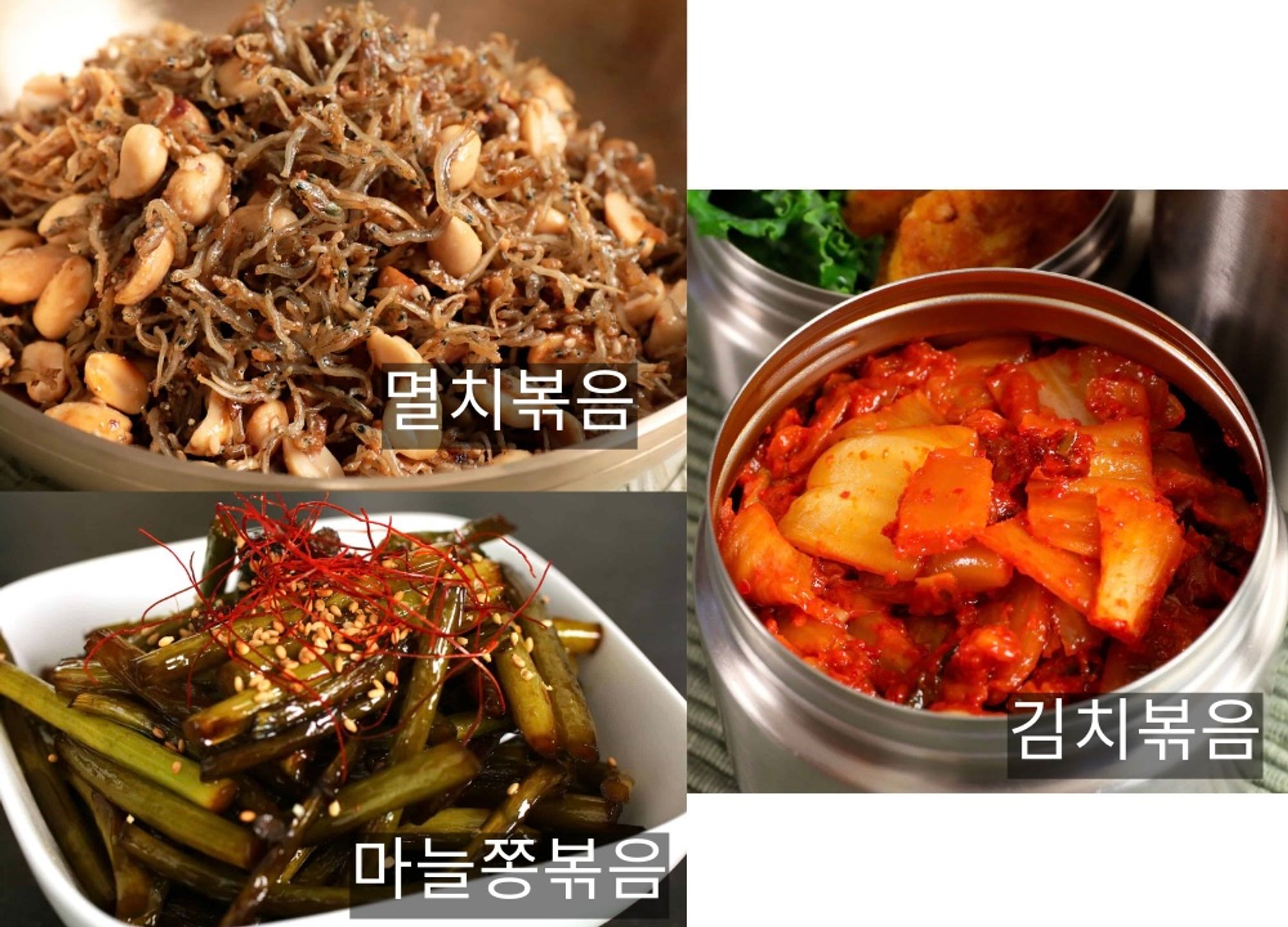 Photos credit and recipes: Maangchi (멸치볶음, 김치볶음, 마늘쫑볶음)
Photos credit and recipes: Maangchi (멸치볶음, 김치볶음, 마늘쫑볶음)
5. 조림 (jorim)
조림 is a dish from simmering vegetables, meat, fish, seafood, or tofu in a seasoned broth. 조림 is usually soy sauce based, but there are also 고추장 (gochujang) or 고춧가루 (gochugaru) based, especially for red-fleshed fish such as mackerel.
Popular 조림 dishes include 연근조림 (braised lotus root), 감자조림 (Korean braised potatoes), and 장조림 (braised beef in soy sauce).
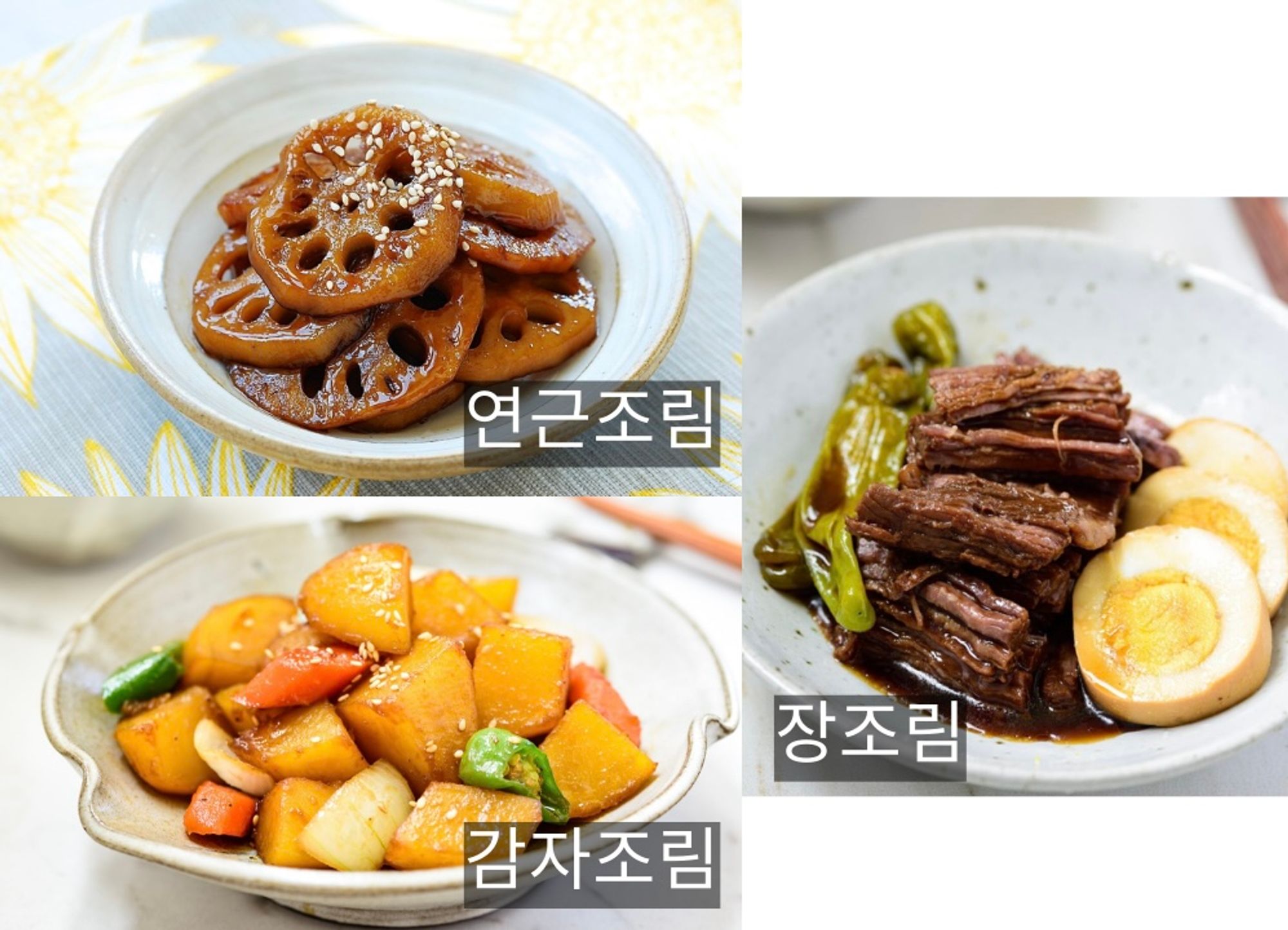 Photos credit and recipes: Korean Bapsang (연근조림, 감자조림, 장조림)
Photos credit and recipes: Korean Bapsang (연근조림, 감자조림, 장조림)
6. 전 (jeon)
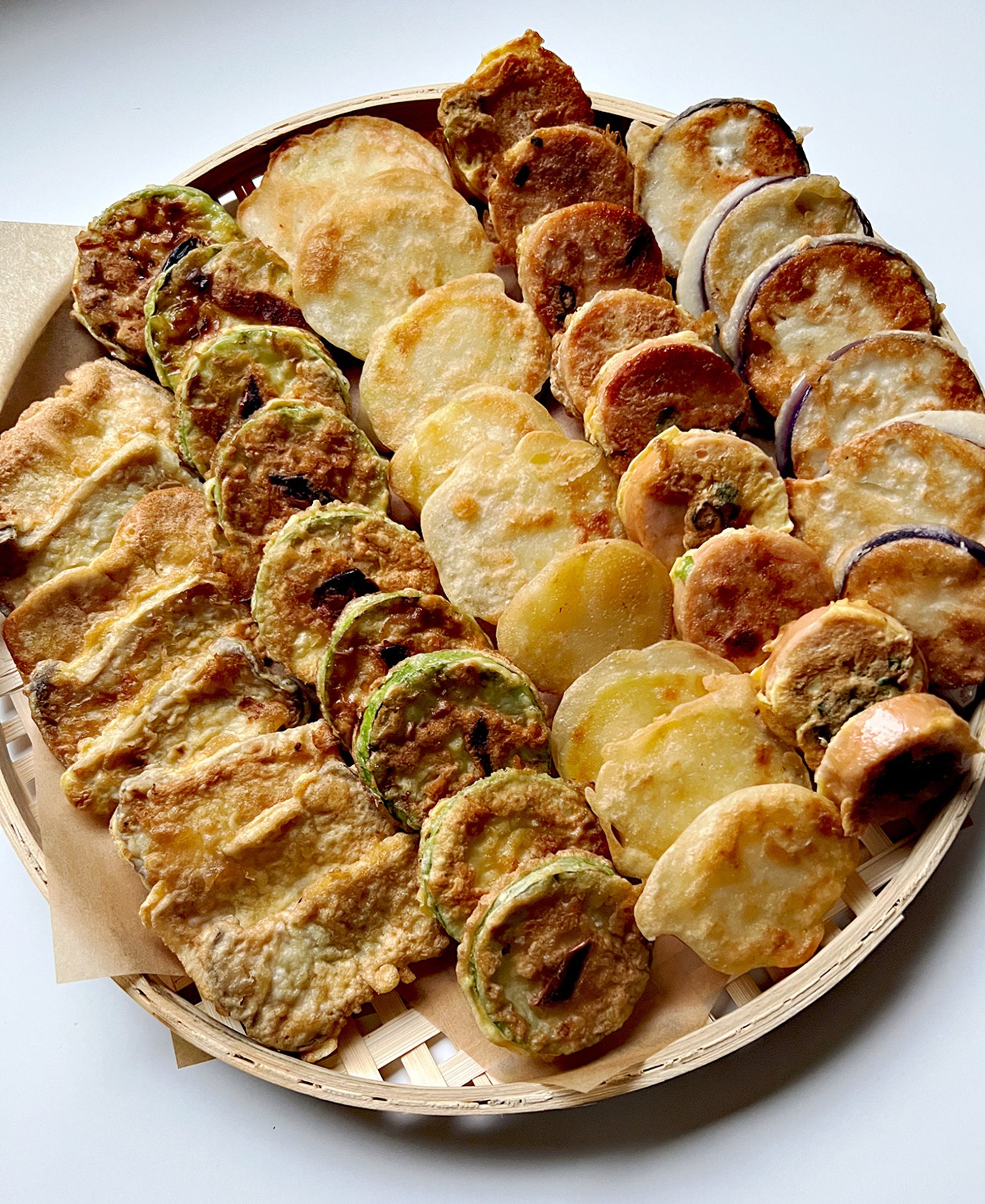 Photo credit and recipe: 모둠전 by Selina S. Lee
Photo credit and recipe: 모둠전 by Selina S. Lee
전 is a name for any pan-fried, pancake-like dish. The seasoned whole, sliced, or minced fish, meat, or vegetables coated with wheat flour and egg wash before being fried in oil. 전 can also be served as an appetizer, an 안주 (anju - food consumed with alcohol), or sometimes as a sweet dessert.
7. 무침 (muchim)
무침 comes from the verb 묻히다 which means ‘to smear’ or ‘to apply.’ Hence, 무침 generally means to “mix with seasonings.”
무침 are commonly seasoned vegetables served as side dishes. Popular 무침 dishes include 깻잎무침 (spicy perilla leaf) and 오이무침 (spicy cucumber salad).
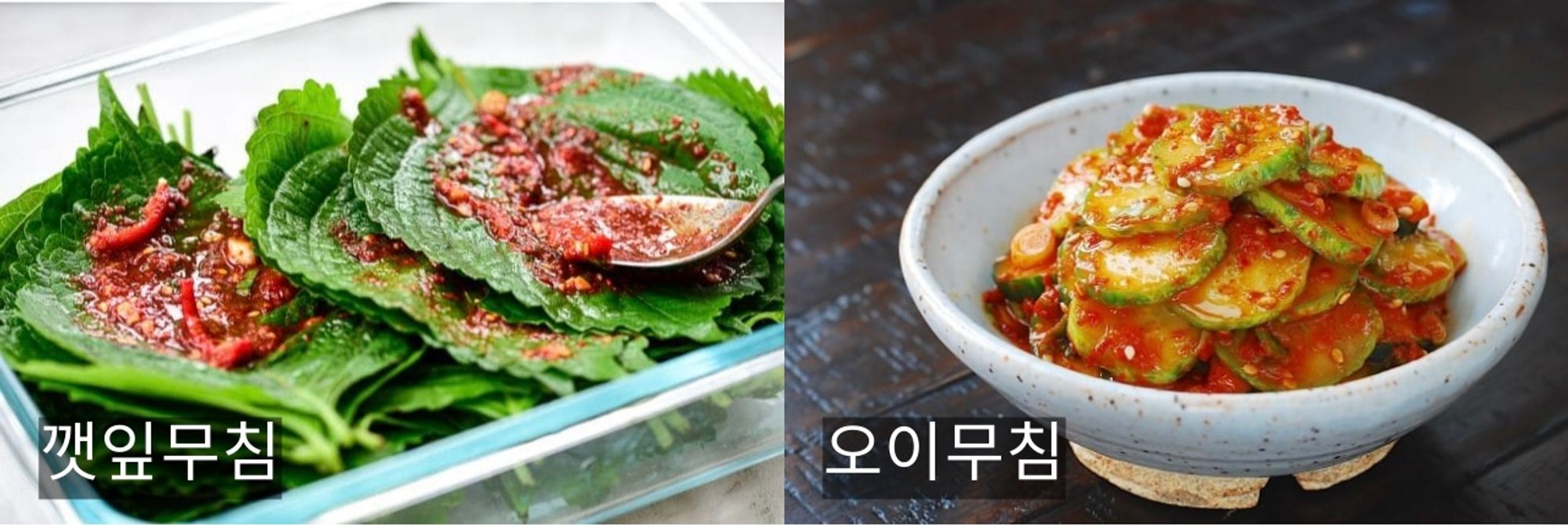 Photos credit and recipes: Korean Bapsang (깻잎무침, 오이무침)
Photos credit and recipes: Korean Bapsang (깻잎무침, 오이무침)
8. 젓갈 (jeotgal)
젓갈 is a category of salted preserved dishes made with seafood. Some examples include 명란젓갈 (fermented pollack roe) and 오징어젓갈(spicy fermented squid).
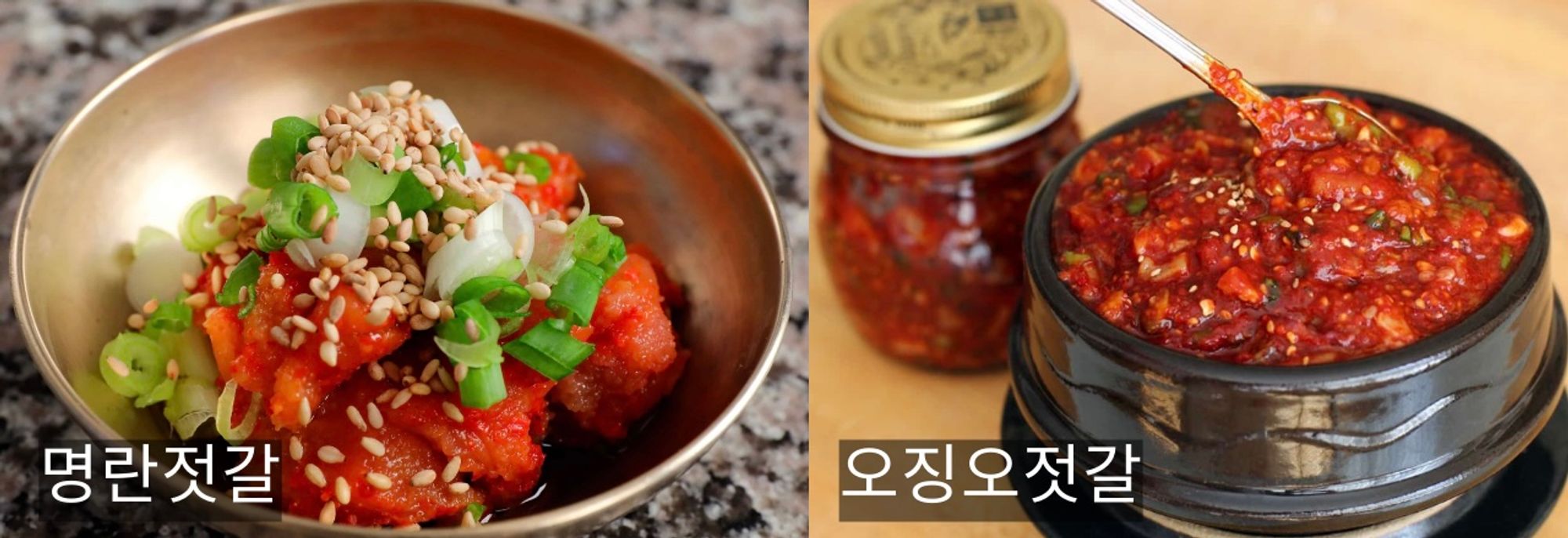 Photo credit and recipe: Maangchi (명란젓갈, 오징어젓갈)
Photo credit and recipe: Maangchi (명란젓갈, 오징어젓갈)
Other notable 반찬 includes:
단무지 (danmuji)
- pickled radish marinated in a natural yellow dye from the gardenia fruit.
계란말이 (gyeranmari)
- sliced rolled omelet
잡채 (japchae)
- glass noodles with a variety of vegetables and beef in a slightly sweet garlic sauce
감자 샐러드 (gamja salad)
- Korean-style potato salad with apples and carrots
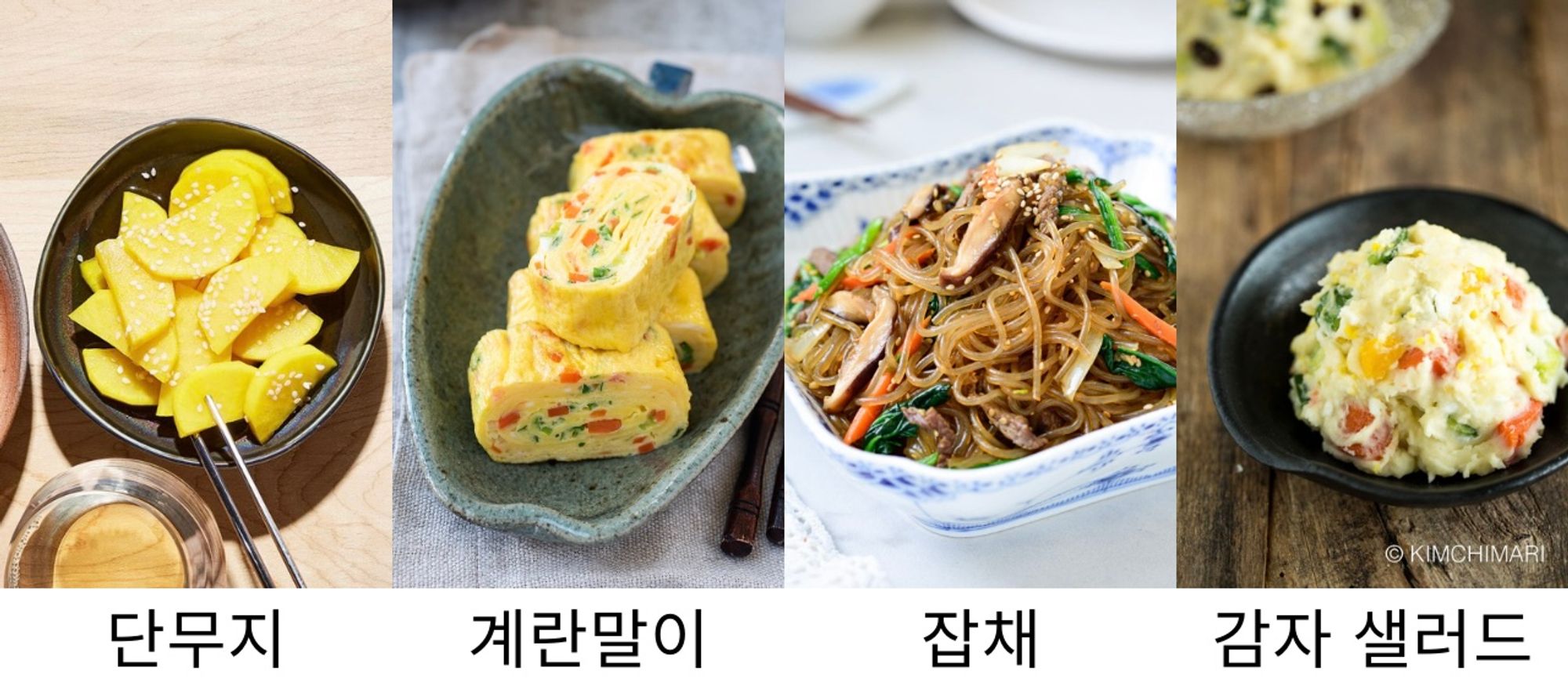 Photo credit and recipes: 단무지, 계란말이, 잡채, 감자 샐러드
Photo credit and recipes: 단무지, 계란말이, 잡채, 감자 샐러드
Significance of 반찬
You may wonder, why are 반찬 free? In Korean society, providing complimentary 반찬 in restaurants reflects hospitality and generosity. Regardless of big restaurants with a colorful array of 반찬 or a small street food stall offering at least one or two small 반찬, side dishes are indispensable and a significant part of Korean cuisine. It is a gesture to demonstrate quality of care and service, ensuring a satisfying dining experience at their place.
The Korean dining culture greatly emphasizes sharing and communal dining, a sense of togetherness, and a lively social dining environment. Therefore, the shared plates 반찬, usually placed in the middle of the table, play a vital role in encouraging interaction, conversation, and food sharing among diners.
In addition, 반찬 showcases Korean cultural heritage and traditions. This unique dining culture provides a glimpse into their agricultural practices, historical influences, and regional specialties. The preparation and presentation of 반찬 involve traditional techniques, such as fermentation, pickling, and seasoning, passed down through generations. As the preparation of 반찬 mainly involves fermentation processes, 반찬 generally contains probiotics that promote gut health and digestion.
In a nutshell, 반찬 is an essential component of Korean cuisine. It represents Korean history and cultural traditions, ingrained in Korean society until today. Understanding the significance of 반찬 allows a deeper appreciation for Korean cuisines and makes this culinary tradition an exceptional experience.
- Author: Good Job Korean team
- Editor: Good Job Korean team


